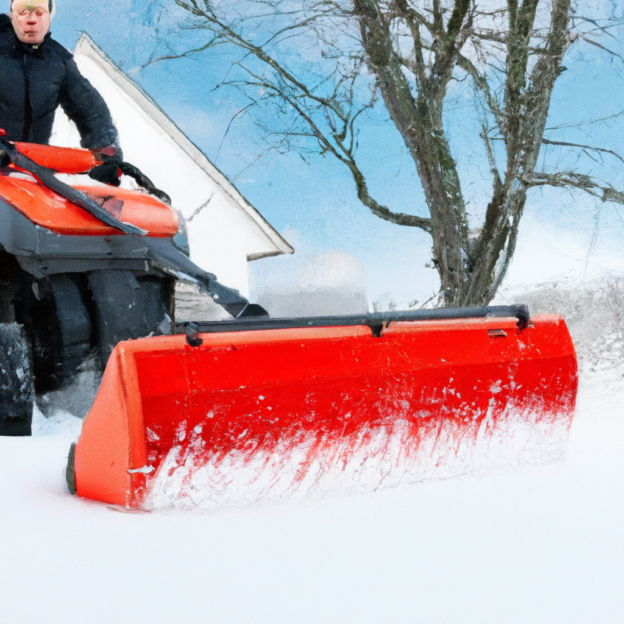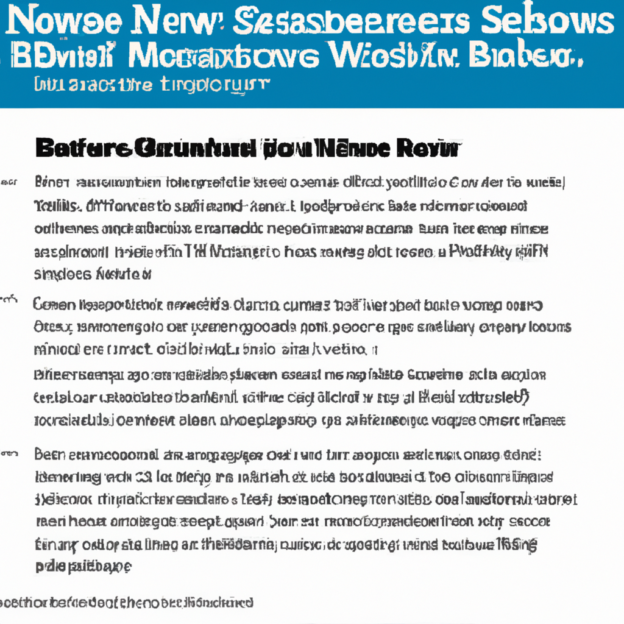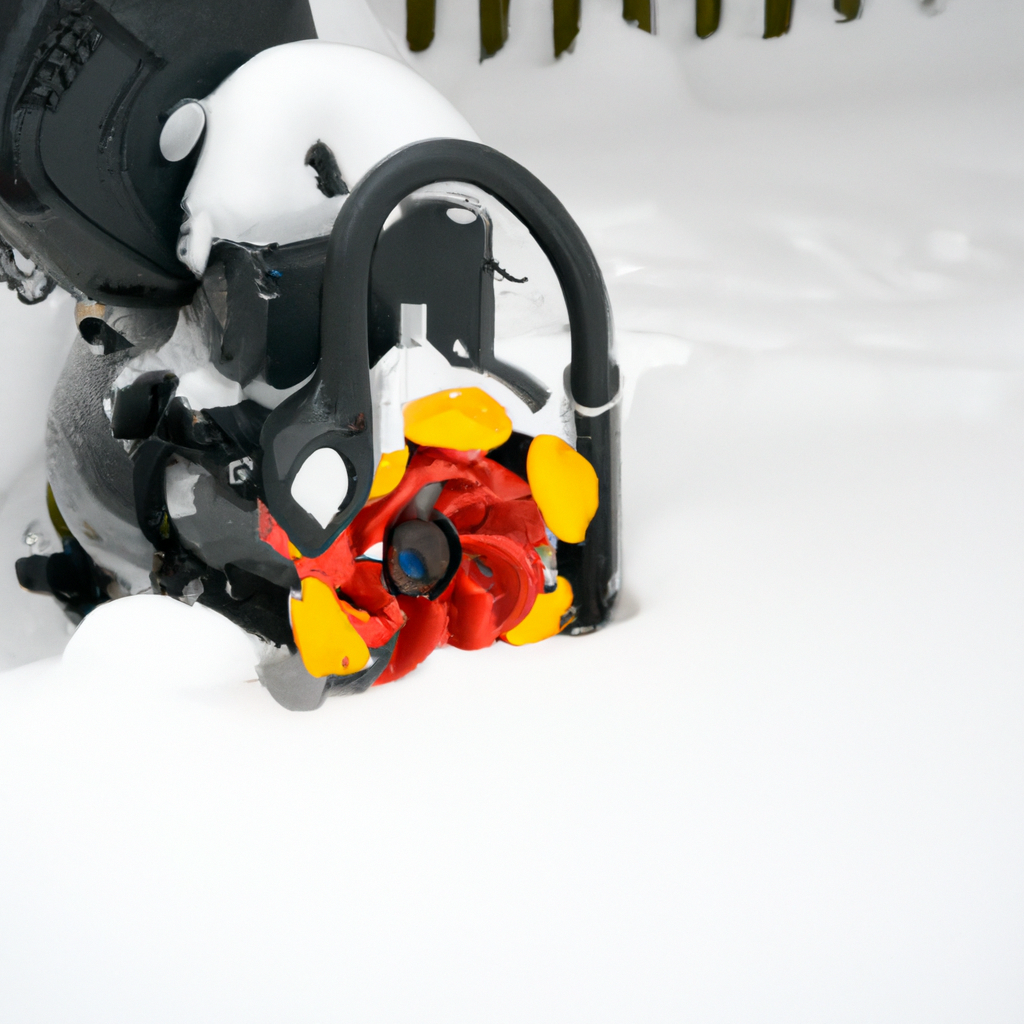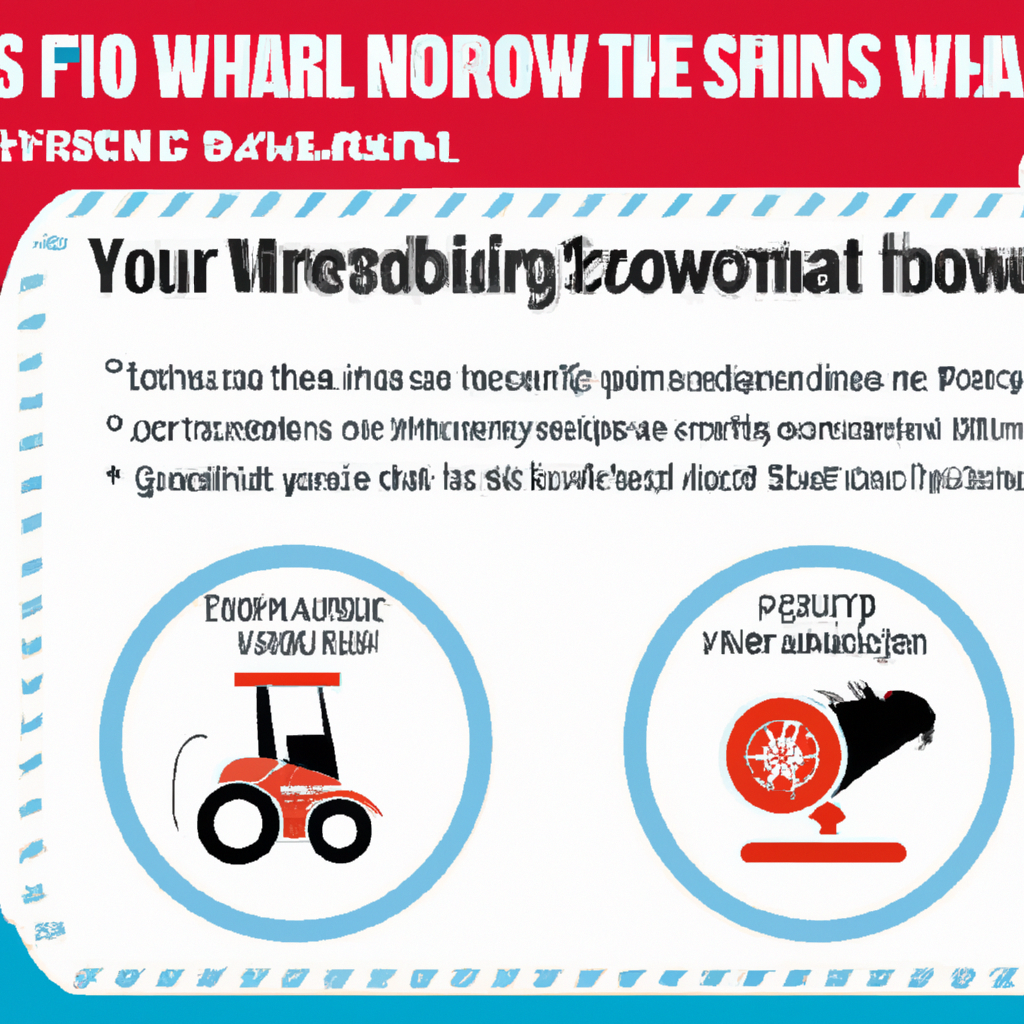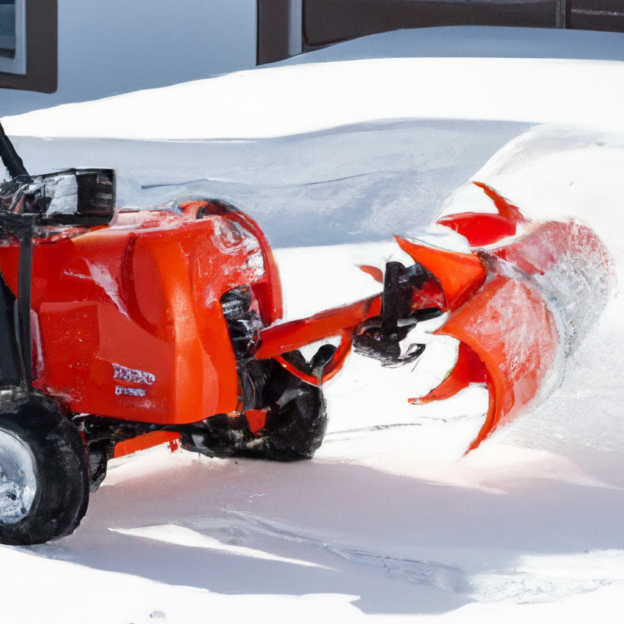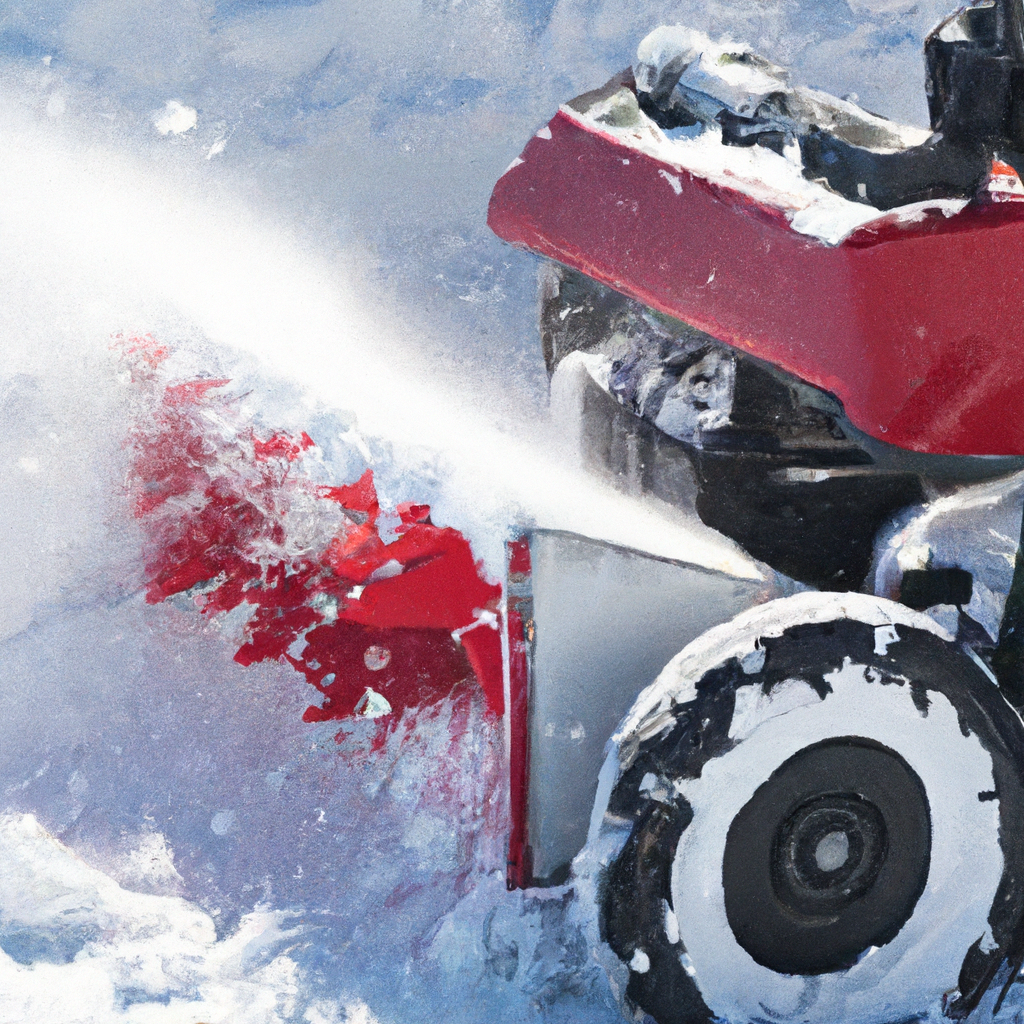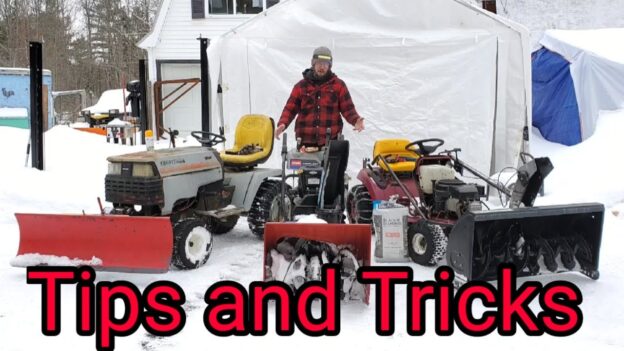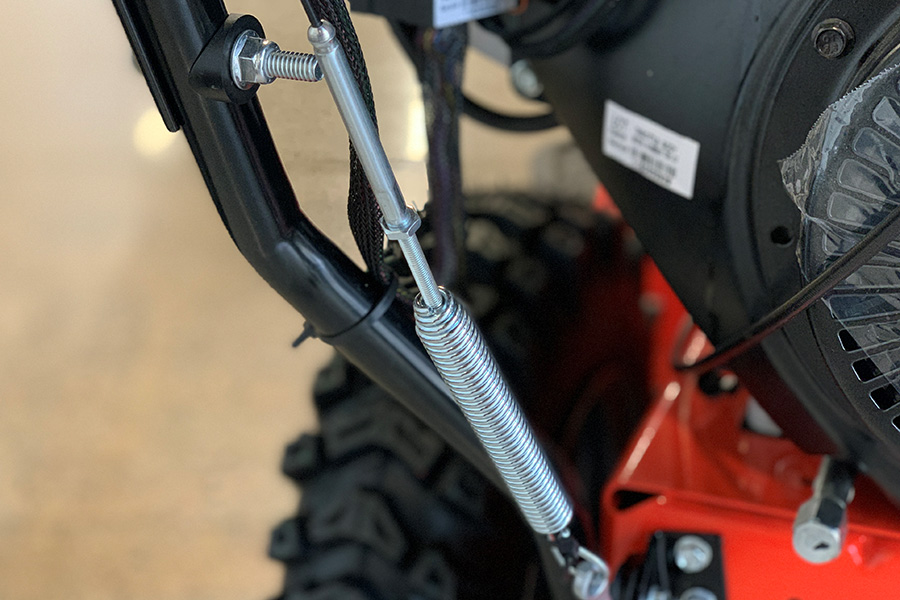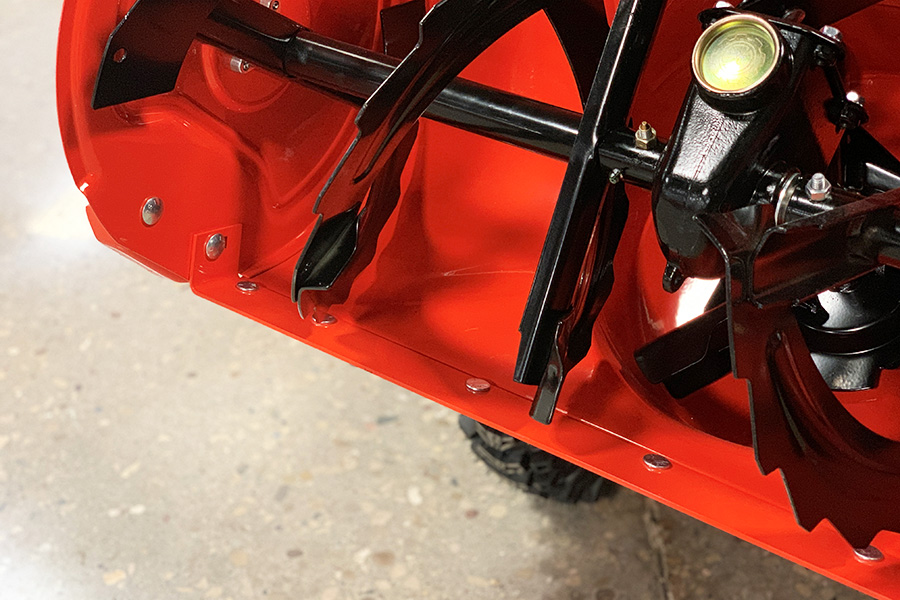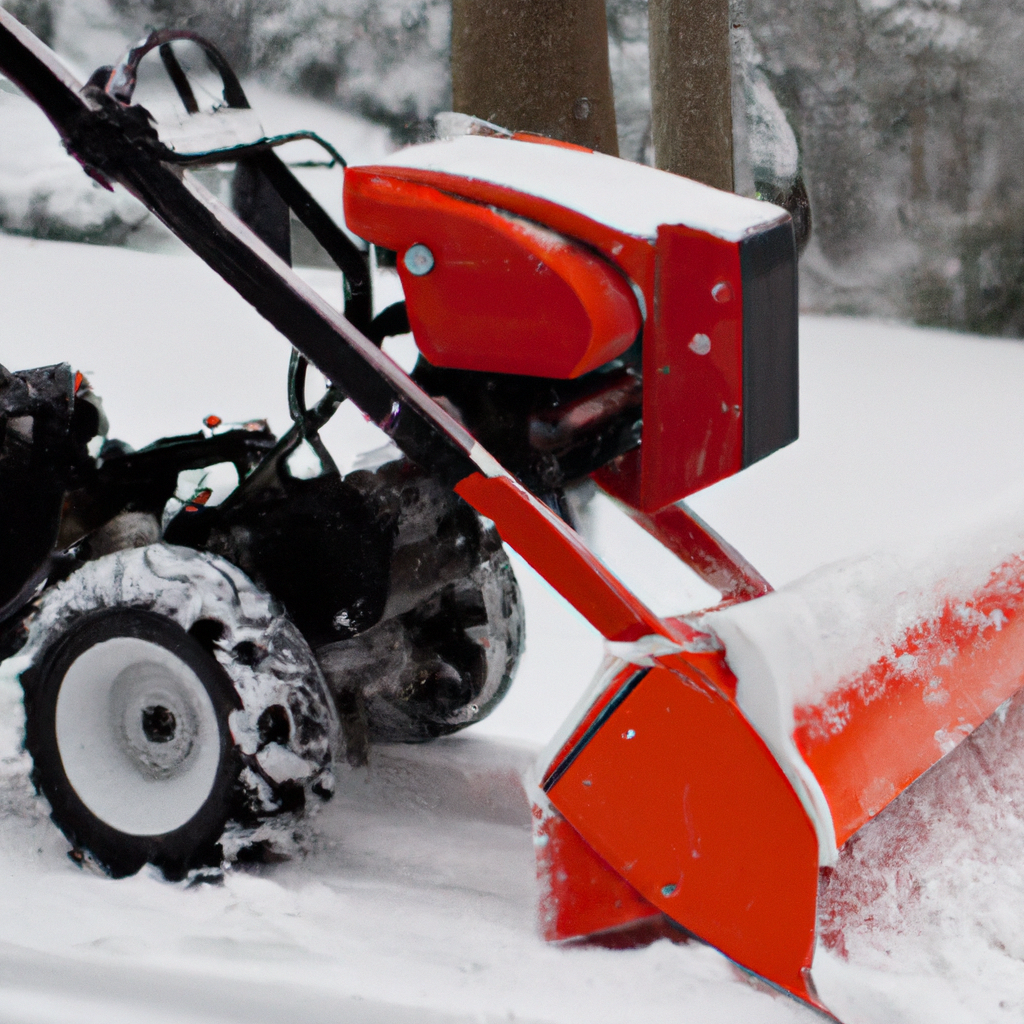If you’ve ever wondered whether cordless snowblowers can hold their own against their gas-powered counterparts, then you’re in the right place. Winter is here, and with it comes the daunting task of clearing snow from your driveway and walkways. But before you invest in a snowblower, you want to make sure that the cordless option will pack enough punch to tackle the job effectively. In this article, we’ll explore whether cordless snowblowers live up to the power and performance of gas-powered ones, helping you make an informed decision for a snow-free winter.
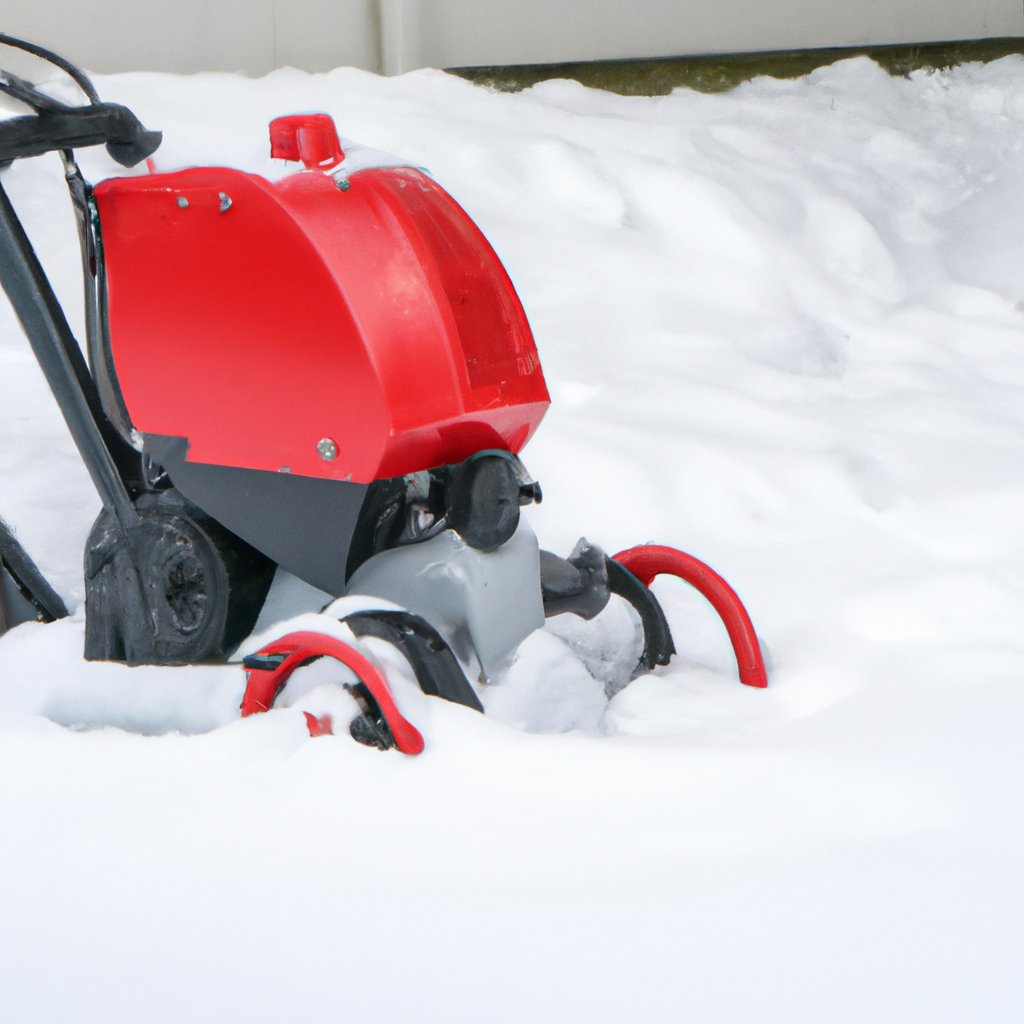
Power
Power output comparison
When it comes to power output, there is a noticeable difference between cordless snowblowers and their gas-powered counterparts. Gas-powered snowblowers typically have a higher power output, as they rely on gasoline-fueled engines. These engines are designed to provide a significant amount of power, allowing them to tackle even heavy and wet snow with ease.
Cordless snowblowers, on the other hand, rely on battery power. While modern batteries have come a long way in terms of performance, they are still not able to match the power output of gas engines. This means that cordless snowblowers may struggle with heavier snowfalls or denser snow. However, for lighter snowfalls and average winter conditions, cordless snowblowers can still provide sufficient power.
Engine power vs battery power
Gas-powered snowblowers are equipped with powerful engines that range in size and horsepower. These engines can generate a high level of torque, which allows them to effectively throw snow far distances. This engine power is especially important when dealing with heavy or wet snow, as it requires greater force to clear.
On the other hand, cordless snowblowers rely on batteries for power. While battery technology has improved over the years, it still has limitations. Battery-powered snowblowers may not have the same level of torque as gas-powered ones, which can affect their performance in heavier snow conditions. However, advancements in battery technology have allowed some cordless models to come close to matching the power of gas engines.
Performance in heavy snow
When it comes to performance in heavy snow conditions, gas-powered snowblowers tend to have the upper hand. The combination of a powerful engine and high torque allows gas-powered models to effortlessly tackle deep, heavy snow. The auger and impeller systems in these snowblowers are designed to handle the extra strain, providing efficient and effective clearing.
Cordless snowblowers, while they can still perform well in lighter snow conditions, may struggle when faced with heavy snow. The lower power output and torque of battery-powered models can make it more difficult to break through the dense snow. However, some higher-end cordless models are equipped with features like dual-stage augers and powerful motors that can help improve their performance in heavier snow.
Mobility
Weight and portability
One of the key advantages of cordless snowblowers is their lightweight and portable nature. Compared to gas-powered snowblowers, which are typically larger and heavier due to the engine and fuel tank, cordless models are much lighter and easier to maneuver. This makes them a great option for those who may have difficulty handling heavier equipment or have limited storage space.
Gas-powered snowblowers, while heavier, often have larger wheels and handles that make them easier to transport. However, the weight can still be a drawback for some users, especially if they need to move the snowblower across uneven or difficult terrain. It’s important to consider your own physical capabilities and the type of terrain you will be working on when choosing a snowblower based on weight and portability.
Ease of maneuverability
In terms of maneuverability, cordless snowblowers are generally more agile and easier to handle than gas-powered ones. The lightweight design and cordless operation allow for greater maneuverability, making it easier to navigate around obstacles and tight spaces. This can be particularly helpful when dealing with a smaller driveway or walkway.
Gas-powered snowblowers, while heavier, often have more powerful engines and larger auger systems. This can make them slightly more challenging to maneuver, especially for those who are not as physically strong or experienced. However, many gas-powered models are equipped with features such as power steering, multiple speeds, and adjustable chute controls, which can help improve maneuverability.
Performance on uneven terrain
When it comes to uneven terrain, both cordless and gas-powered snowblowers have their strengths and limitations. Cordless snowblowers, due to their lightweight design, tend to do better on uneven surfaces. They are easier to maneuver and less likely to get caught or bogged down on bumps or uneven sections of the ground.
Gas-powered snowblowers, on the other hand, often have larger wheels and more powerful engines, which can help them tackle uneven terrain with greater ease. The added weight and traction from larger wheels can provide stability and prevent the snowblower from getting stuck or tipping over. However, the weight of gas-powered models can also make them more challenging to push or maneuver on uneven surfaces.
Operating Time
Gas-powered snowblower runtime
When it comes to operating time, gas-powered snowblowers have a significant advantage over cordless models. Gas-powered snowblowers can run for extended periods as long as they have a sufficient supply of fuel. This makes them ideal for clearing large areas or for prolonged use during heavy snowstorms.
The runtime of a gas-powered snowblower is dependent on the size of its fuel tank and the efficiency of the engine. Models with larger fuel tanks can run for several hours before needing to be refueled, while smaller tanks may require more frequent refueling. It’s important to keep in mind that gas-powered snowblowers need to be refueled with gasoline, which can be an additional expense and may require a trip to the gas station.
Cordless snowblower runtime
Cordless snowblowers, on the other hand, are limited by their battery life. The runtime of a cordless snowblower will vary depending on the capacity of the battery and the power consumption of the motor. Higher-capacity batteries can provide longer runtimes, while smaller batteries may require more frequent recharging.
Battery-powered snowblowers typically have a runtime ranging from 30 minutes to 2 hours, depending on the model and the snow conditions. This can be sufficient for clearing small to medium-sized areas, such as driveways or sidewalks. However, for larger properties or heavy snowfalls, the limited runtime of cordless snowblowers can be a drawback, as it may require multiple battery swaps or a break for recharging.
Battery life and recharge time
The battery life and recharge time of cordless snowblowers are important factors to consider when comparing them to gas-powered models. The battery life refers to how long the battery can hold a charge and provide power to the snowblower. Higher-quality batteries with larger capacities tend to have longer battery lives, allowing for more continuous operation before needing to be recharged.
When it comes to recharge time, it can vary depending on the type of battery and the charger used. Some cordless snowblowers come with rapid chargers that can recharge the battery in as little as 30 minutes, while others may take several hours to fully recharge. It’s important to consider the recharge time when planning your snow clearing routine and to have spare batteries or a backup option available if needed.

Start-up and Maintenance
Ease of starting
One advantage of gas-powered snowblowers is their ease of starting. Most gas-powered models utilize a pull-start mechanism, which typically involves pulling a cord to start the engine. While this may require some effort, modern gas engines are designed to start reliably with minimal fuss, even in cold temperatures. Some gas-powered models even incorporate electric start options, making them even easier to start.
Cordless snowblowers, on the other hand, have the advantage of instant start-up. With the push of a button or the pull of a trigger, cordless snowblowers can quickly start up and begin clearing snow. This convenience can be especially beneficial in cold weather conditions when starting a gas-powered snowblower may require additional time and effort.
Maintenance requirements
When it comes to maintenance, cordless snowblowers have a clear advantage over gas-powered ones. Gas-powered snowblowers require regular maintenance, such as oil changes, spark plug replacements, and fuel system cleaning. These maintenance tasks can be time-consuming and require some technical know-how.
Cordless snowblowers, on the other hand, have minimal maintenance requirements. Aside from periodic cleaning and inspecting the battery for any damage, there are no oil changes or fuel system maintenance to worry about. This can save you time and effort in the long run and make cordless snowblowers a more convenient option for those who prefer minimal maintenance.
Oil and fuel management
One aspect of gas-powered snowblowers that can be a hassle for some users is oil and fuel management. Gas-powered snowblowers require the user to regularly check and change the oil, as well as ensure that the fuel tank is always filled with the correct gasoline and fuel mixture. This can be an additional task to remember and can result in downtime if the machine runs out of fuel or oil.
Cordless snowblowers, being battery-powered, do not require any oil or fuel management. Simply ensure that the battery is charged and ready to go, and you can start clearing snow without any worry about fuel mixtures or oil levels. This convenience can be a major selling point for those who prefer a hassle-free snowblower experience.
Noise and Emissions
Noise levels comparison
Noise levels can be an important consideration, especially for those living in residential areas or close quarters. Gas-powered snowblowers tend to be louder due to the combustion engine, which can emit noise levels ranging from 90 decibels (dB) or higher. This can be disruptive to both the operator and those nearby, and hearing protection is often recommended.
Cordless snowblowers, on the other hand, are generally much quieter. The electric motors used in these snowblowers produce significantly less noise, usually ranging from 70 dB to 85 dB. This makes them a more neighbor-friendly option and allows for quieter operation, especially in the early morning or late evening when noise restrictions may be in effect.
Environmental impact
Gas-powered snowblowers, as combustion engine devices, have a direct impact on the environment. The emissions produced by gas engines contribute to air pollution and can have adverse effects on air quality, particularly in residential areas. Additionally, gas engines produce greenhouse gases that contribute to climate change.
Cordless snowblowers, being battery-powered, have a much smaller environmental impact. They produce zero emissions during operation, making them a cleaner and greener choice. This can be a significant advantage for those who are conscious of their carbon footprint and want to reduce their impact on the environment.
Fume and odor concerns
Gas-powered snowblowers can emit fumes and odors during operation, which can be a concern for some users. The combustion engine produces exhaust gases that contain pollutants and can create foul odors. This can be a nuisance for both the operator and those nearby, and proper ventilation is often recommended when using a gas-powered snowblower.
Cordless snowblowers, on the other hand, do not produce any fumes or odors during operation. They operate silently and without any emissions, providing a more pleasant user experience. This can be particularly beneficial for those with sensitivities to smells or allergies, as well as for those who value a clean and odor-free environment.
Clearing Capacity
Clearing width
The clearing width of a snowblower refers to the width of the path it can clear in a single pass. Gas-powered snowblowers typically have wider clearing widths compared to cordless models. This is due to their larger size and more powerful engines, which allow them to handle a larger volume of snow.
Gas-powered snowblowers can have clearing widths ranging from 20 inches to over 30 inches, depending on the model. This allows for faster snow clearing, as more snow can be cleared with each pass. However, it’s important to note that wider clearing widths also mean a larger and heavier machine, which can impact maneuverability and storage requirements.
Cordless snowblowers, while not as wide as gas-powered models, still offer sufficient clearing widths for most residential needs. The clearing widths of cordless snowblowers typically range from 18 inches to 24 inches. While this may require more passes to clear a larger area, it can still be efficient for clearing driveways, sidewalks, and smaller spaces.
Clearing depth
In addition to clearing width, the clearing depth is another important consideration. The clearing depth refers to the maximum amount of snow that a snowblower can handle in a single pass. Gas-powered snowblowers, with their higher power output, are typically capable of clearing deeper snow depths compared to cordless models.
Gas-powered snowblowers can handle snow depths ranging from 12 inches to 23 inches or more, depending on the model. This makes them suitable for regions that experience heavy snowfall or areas with significant snow accumulation. The larger auger and impeller systems in gas-powered models enable them to effectively cut through and throw large volumes of snow.
Cordless snowblowers, while not designed for extreme snow depths, can still handle moderate snow depths. The clearing depths of cordless snowblowers typically range from 8 inches to 12 inches. This is sufficient for most typical snow conditions and can handle the average snow depth found in residential areas.
Throwing distance
The throwing distance of a snowblower refers to how far it can throw the cleared snow. Gas-powered snowblowers, with their powerful engines and auger systems, are capable of throwing snow over long distances. The throwing distance of gas-powered models can range from 20 feet to over 40 feet, depending on the power and design of the snowblower.
Cordless snowblowers, due to their lower power output, may have a shorter throwing distance compared to gas-powered models. The throwing distance of cordless snowblowers usually ranges from 10 feet to 30 feet. While this may be sufficient for most residential needs, it’s important to consider the specific snow clearing requirements and the desired throwing distance when choosing a snowblower.
Durability and Lifespan
Longevity of gas-powered snowblowers
Gas-powered snowblowers are known for their durability and longevity. The sturdy construction and robust engines of gas-powered models allow them to handle heavy use and challenging conditions. With proper maintenance and care, a gas-powered snowblower can last for many years and provide reliable performance throughout its lifespan.
The longevity of a gas-powered snowblower can also be attributed to their ability to handle a wide range of snow conditions. From light fluffy snow to heavy wet snow, gas-powered models are designed to handle it all. This versatility and durability make gas-powered snowblowers a popular choice for those living in regions with harsh winters.
Lifespan of battery-powered snowblowers
Cordless snowblowers, being relatively new to the market, have not been around long enough to establish a long-term track record for lifespan. However, advancements in battery technology and the quality of the snowblower components have improved the durability and lifespan of cordless models.
The lifespan of a battery-powered snowblower will depend on various factors, including the quality of the snowblower itself, the capacity of the batteries, and the maintenance and care provided. Generally, with proper care and maintenance, a cordless snowblower can last for several years. It’s important to follow the manufacturer’s guidelines for battery usage and storage to maximize the lifespan of the snowblower.
Build quality and material durability
When it comes to build quality and material durability, both gas-powered and cordless snowblowers can vary. Gas-powered snowblowers are typically constructed with durable materials, such as heavy-duty steel for the housing and auger components. This ensures that the snowblower can withstand the rigors of heavy snow clearing and the occasional encounter with rocks or other debris.
Cordless snowblowers, being lighter and more compact, often utilize plastic and lighter materials in their construction. While these materials may not be as robust as steel, they are still designed to withstand normal snow clearing operations. It’s important to choose a cordless snowblower from a reputable brand that uses high-quality materials to ensure durability and longevity.
Cost and Value
Initial purchase cost
The initial purchase cost of a snowblower is an important consideration for many buyers. Gas-powered snowblowers, due to their larger size, more powerful engines, and additional components, generally have a higher price tag compared to cordless models. The cost of a gas-powered snowblower can range from a few hundred dollars to over a thousand dollars, depending on the size and features.
Cordless snowblowers, while more compact and lighter, can still be a significant investment. The cost of a cordless snowblower is typically lower than that of a gas-powered one, ranging from a few hundred dollars to around a thousand dollars. However, it’s important to consider the overall value and performance of the snowblower in relation to its price when making a purchasing decision.
Gas and maintenance expenses
In addition to the initial purchase cost, it’s important to consider the ongoing expenses associated with owning a snowblower. Gas-powered snowblowers require fuel, which can be an additional expense, especially during heavy snowfall seasons. Additionally, maintenance tasks such as oil changes and spark plug replacements can also add to the overall cost of owning a gas-powered snowblower.
Cordless snowblowers, while not requiring fuel, still have maintenance and operating costs. The cost of electricity to charge the batteries should be taken into account, although it is generally lower compared to buying gasoline. Additionally, the cost of replacement batteries or spare batteries should be considered, as batteries do have a limited lifespan and may need to be replaced over time.
Long-term cost comparison
When comparing the long-term cost of gas-powered and cordless snowblowers, it’s important to consider both the initial purchase cost and the ongoing expenses. Gas-powered snowblowers may have a higher upfront cost, but their fuel and maintenance expenses can add up over time. Cordless snowblowers, on the other hand, have lower ongoing expenses but may require the purchase of spare batteries or replacement batteries in the future.
It’s important to consider your specific snow clearing needs and budget when comparing the long-term cost of different snowblower options. Additionally, factors such as the size of the area to be cleared, the frequency of snowfall, and the average snow conditions in your region should be taken into account when evaluating the overall value and cost-effectiveness of a snowblower.
Weather Conditions
Cold weather performance
Cold weather performance is crucial when choosing a snowblower, as snow clearing often needs to be done in freezing temperatures. Gas-powered snowblowers generally handle cold weather well, as their engines are designed to start reliably in low temperatures. Some models even have heated handles or engine components to prevent freezing or ice buildup.
Cordless snowblowers, while also capable of operating in cold weather, may have some limitations. Cold temperatures can affect the performance and battery life of cordless snowblowers. This means that in extremely cold conditions, the runtime of the snowblower may be reduced, and the battery may need to be recharged more frequently. However, advancements in battery technology have improved the cold weather performance of cordless snowblowers.
Effectiveness in wet snow
The effectiveness of a snowblower in wet snow conditions is an important consideration, as wet snow can be heavier and more difficult to clear than dry snow. Gas-powered snowblowers generally excel in wet snow conditions, thanks to their powerful engines and high torque. The auger and impeller systems in gas-powered models are designed to efficiently handle wet snow, preventing clogging and allowing for effective clearing.
Cordless snowblowers, while not as powerful as gas-powered models, can still handle wet snow to some extent. However, the lower power output and torque of cordless models can make it more challenging to clear wet, heavy snow. It may require more passes or more frequent clearing breaks to prevent any clogs or strain on the snowblower. Choosing a cordless snowblower with features like a dual-stage auger can help improve its performance in wet snow conditions.
Adaptability to various snow conditions
When it comes to adaptability to various snow conditions, both gas-powered and cordless snowblowers have their strengths and limitations. Gas-powered snowblowers, with their powerful engines and auger systems, are designed to handle a wide range of snow conditions. From light fluffy snow to heavy wet snow, gas-powered models can adapt and effectively clear different types of snow.
Cordless snowblowers, while not as powerful, can still adapt to various snow conditions to some extent. The key is to choose a cordless model that suits the average snow conditions in your region. Models with higher power outputs and larger batteries can handle heavier or denser snow, while smaller cordless snowblowers may be more suitable for lighter snowfalls. It’s important to consider the typical snow conditions in your area and choose a snowblower that can adapt accordingly.
Safety and Convenience Features
Safety mechanisms and controls
Safety is paramount when operating a snowblower, as it involves potentially dangerous moving parts. Both gas-powered and cordless snowblowers are equipped with safety mechanisms and controls to ensure safe operation. These may include features such as dead-man switches, which require the user to be in control of the snowblower at all times, and safety shields or guards to prevent injury from the rotating auger.
Gas-powered snowblowers often come with additional safety features such as self-propulsion controls and auger clutch mechanisms. These features help prevent accidents and make it easier to control the snowblower during operation. Cordless snowblowers, while they may have fewer safety features, still incorporate essential mechanisms to ensure safe and user-friendly operation.
Convenience features and accessories
Convenience features and accessories can greatly improve the user experience when using a snowblower. Gas-powered snowblowers often come with a variety of convenience features, such as electric start options, power steering, adjustable chute controls, and headlights for improved visibility. These features can make the operation of a gas-powered snowblower more convenient and comfortable.
Cordless snowblowers, while more compact and lightweight, still incorporate convenience features and accessories. These may include features such as adjustable handles for ergonomic operation, LED lights for improved visibility, and easy-to-use controls for quick and hassle-free clearing. Some cordless models also offer the option to interchange batteries with other cordless tools, providing added convenience and versatility.
Ergonomics and user-friendliness
Ergonomics and user-friendliness are important considerations when choosing a snowblower, as snow clearing can be physically demanding and tiring. Gas-powered snowblowers often have larger handles and more comfortable grips, allowing for better control and reduced strain on the user. Some models also offer adjustable handle heights and chute controls for increased comfort.
Cordless snowblowers, being lighter and more compact, are generally more ergonomic and user-friendly than gas-powered models. The lightweight design and adjustable handles make them easier to maneuver and control, reducing fatigue during operation. Additionally, the instant start-up and quiet operation of cordless snowblowers provide a more user-friendly experience compared to the startup noise and fumes of gas-powered ones.
In conclusion, while cordless snowblowers may not be as powerful as gas-powered ones, they offer several advantages in terms of weight, maneuverability, convenience, and environmental impact. Gas-powered snowblowers excel in heavy snow conditions and provide long runtime, making them suitable for larger areas and heavy-duty use. The choice between the two ultimately depends on individual needs and priorities, taking into consideration factors such as snow conditions, area size, budget, noise requirements, and environmental impact.




